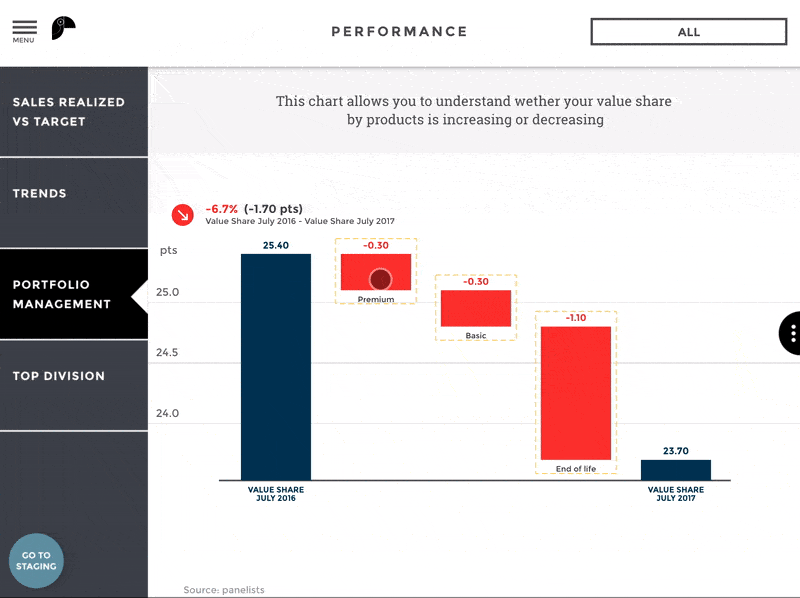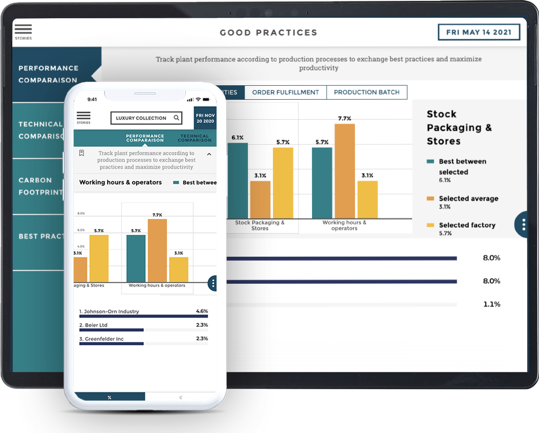
In the last few years, Customer Success teams have become a staple for most ISVs. They help to increase adoption, reduce churn, and, most importantly, get a clearer understanding of customer requirements. A recent survey found that 72% of companies have a clearly defined strategy for customer success. This is designed to:
- Bring down the rate of customer churn (66%)
- Increase the usage rates of software products (65%)
- Boost the chances of getting a renewal (57%)
But there’s another critical role that Customer Success teams can play, and this one is particularly relevant for ISVs featuring embedded analytics in a big way. They can collaborate with Sales and Product teams – acting as a bridge – to ensure that the roadmap is in perfect alignment with delivery expectations.
As tech and marketing guru Neil Patel put it, “Customer Success isn’t responsible for just renewals and upsells. They also own the “90-day adoption”, which is time-to-value. They must show new customers the value of the product in 90 days. They also provide product roadmap feedback, because they are in close contact with customers and can provide valuable input for building something the customer wants.”
In other words, customers let you know exactly what they expect from embedded analytics. Instead of rushing into development, dictated by customers’ data needs, your Customer Success team can convey a more feasible roadmap that’s in sync with the ideal time-to-value. This new avatar of Customer Success teams (beyond addressing just churn and usage) is what McKinsey calls Customer Success 2.0. It introduces a unified go-to-market strategy where sales, product design, and the customer-side account manager work in tandem to generate value.
As one can imagine, Customer Success 2.0 hinges on the perfect collaboration between your Product and Customer Success team.
4 Steps Towards Stronger Synergy between Product and Customer Success
To begin with, consider why this collaboration is so critical in the data-driven era. In 2019, a whopping 92% of companies said that they want to invest in big data and data analytics capabilities, like AI. This means that ISVs catering to this enterprise hunger for data must quickly onboard embedded analytics capabilities in line with their goals for customer success. This could cause a highly complex product roadmap – from embedded dashboards to the intricate data visualization techniques, there are several elements to be factored in.
On top of that, companies are increasingly less happy with their data-driven stance. From 37% in 2017 and 32% in 2018, just 31% of companies would call themselves data-driven last year. Inevitably, this translates into a massive expectation from ISVs to fill the gap via the best-embedded analytics technology possible, delivered at the fastest pace.
In this context, the collaboration between your Product and Customer Success Teams is absolutely essential. Not only will it help cater to the rising demand for data capabilities, but it will also make your product roadmap more efficient. We spoke to Marty Kaufman, former VP of Customer Experience at The Knot Worldwide and Principal and Founder of Infinipoint Consulting, for insights into exactly how you could achieve this. He shared four clear steps.
1. Treat your product team as the internal customer
In the case of embedded analytics and other data applications, the Customer Success team benefits from clear ‘guardrails.’ These separate simple customizations and one-off workarounds from the more critical customer requests that may signal a product weakness or an untapped market opportunity.
In these cases, the Product team is the internal customer, and Success provides both the inputs and intel to feed future product iterations.
2. Isolate routine workarounds from more pervasive customization in embedded analytics
Creating guardrails – or gates, or triggers – is as simple as gaining agreement between Product and Success teams on what your Product team considers routine customizations and workarounds. These are then handled by the Customer Success team to create the guardrails.

3. Ask Customer Success managers for feedback on requests that cross the guardrails
Product and Success must agree that a well-structured and well-managed Customer Success team aims to be a one-stop shop for all customer issues, inquiries, and product feedback. This creates a temptation (or a culture) to fix or customize based on each client inquiry quickly. What the Success team can realistically accomplish in providing feedback to the Product team. This covers all requests from customers that cross the guardrails, thereby achieving clarity on expectations.
4. Record and share all embedded analytics requests coming from the customer
Product and Customer Success teams should agree to record, share, and adjudicate all requests coming from the customer. The focus is on analytics and reporting capability requests that cross the guardrails. This would establish a sustainable process for ongoing collaboration and feedback.
Empowering Customer Success Teams with the Tools to Get It Right

The guardrail model implies a strong feedback & iteration loop that allows your embedded analytics feature to be built faster, with more value. To get it right, Customer Success teams require the maximum autonomy possible, gathering insights from users, challenging their ideas, and collaborating with the Product team.
At Toucan, we have found that there are two levers for empowering Customer Success teams: a) a design-first methodology, and b) an easy-to-use embedded analytics platform. The first one lets Customer Success specialists work with users in real-time. The user has an immediate reaction and responds, indicating the way forward. You could also try fast prototyping with fake data, giving Success teams the autonomy to validate a hypothesis before taking it to a product manager.
The second one involves the use of white label analytics, which makes prototyping a simple, non-technical process. Customer Success specialists can use the intuitive UX and guided framework of embedded analytics software to create a prototype in no-time. Customers can either approve or shoot down ideas, generating inputs for the feedback & iteration loop to be acted on by the Product team.
The idea isn’t to showcase full-feature embedded analytics. ISVs must aim to equip Success teams with a tool that demonstrates proof-of-value without derailing the product roadmap.
How Customer Success Teams Transformed Embedded Analytics Delivery: An Example
Marty illustrated this point with a real-world example from his time at Siebel Systems (now Oracle).
“Many of our public sector customers expressed a need for analytics on their prior purchasing data – what they bought, when, from whom, at what cost. While this is not typically available in the private sector, government purchasing data is available in some format.
The Success function – called End User Education back then – worked with customers to uncover the known sources of publically available and third-party purchasable data. We then collaborated with the Product team to mock up and test IF that data could be usable in our analytics module and HOW it should be displayed in the application.
But the data fields are nearly endless since there are multiple overlapping data sources to consider.
Success collaborated with Product to identify the most desirable and most useful information – boiling down 1000s of fields to six – and provided analytics functionality against these six as a first release. As a by-product, in meeting this need, we created the most holistic and ‘clean’ database of US government purchasing at the state and local levels. Customers and competitors were both amazed.”
This is a great example of how an efficient feedback loop between Customer Success teams and Product teams can make all the difference to embedded analytics delivery. Make sure you have the right tools in place, that there is a culture of feedback (not quick fixes), and Customer Success specialists have the autonomy they deserve.





